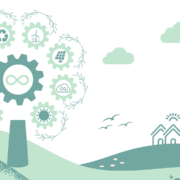The Circular Economy: A New Model for Sustainable Business
The circular economy is transforming how businesses approach sustainability. Instead of the traditional ‘take, make, dispose’ model, the circular economy emphasizes reusing, recycling, and regenerating materials. This article delves into how businesses can adopt this model for long-term sustainability.
What is the Circular Economy?
The circular economy focuses on keeping resources in use for as long as possible, extracting the maximum value while minimizing waste. It contrasts with the linear economy, which leads to resource depletion and environmental damage.
Benefits for Businesses
Cost Savings: By reusing materials, companies can reduce costs associated with raw materials and waste management.
Innovation: The circular economy encourages innovation in product design, leading to more durable and environmentally friendly products.
Reputation: Companies that embrace the circular economy are often seen as leaders in sustainability, boosting their brand reputation.
How to Implement the Circular Economy
- Design for Longevity: Products should be designed to last longer and be easily repairable or recyclable.
- Resource Recovery: Implement systems to recover and reuse materials from end-of-life products.
- Collaborate Across the Supply Chain: Work with suppliers and customers to close the loop on resource use, ensuring materials are reused or recycled.
Real-World Examples
Companies like IKEA are leading the way by incorporating circular principles into their business models. IKEA has launched buy-back programs, where customers can return used furniture for resale or recycling.
The circular economy offers a sustainable alternative to the traditional business model. By embracing this approach, businesses can reduce their environmental impact while unlocking new opportunities for growth and innovation.



